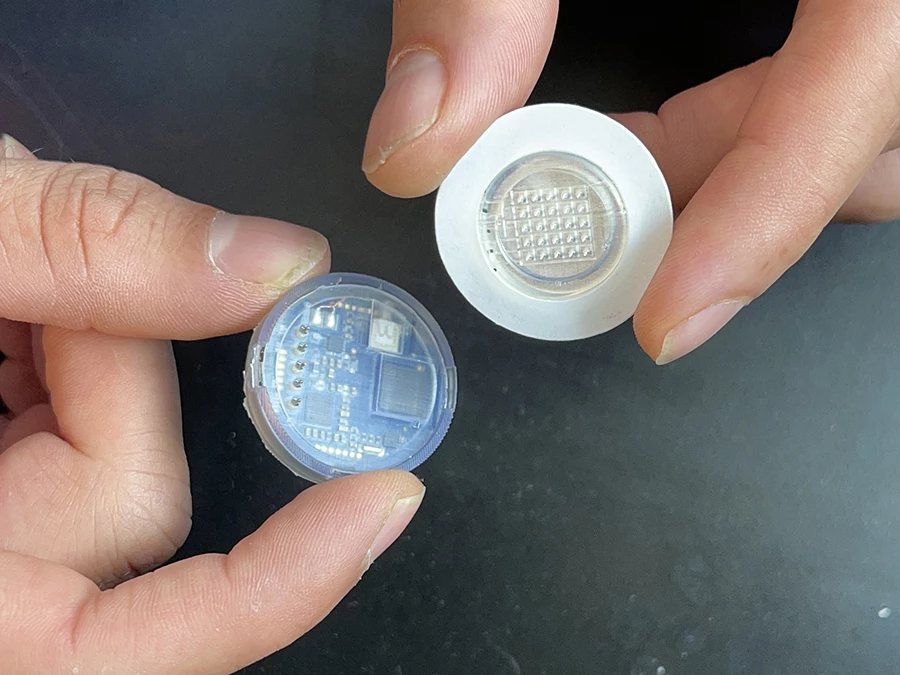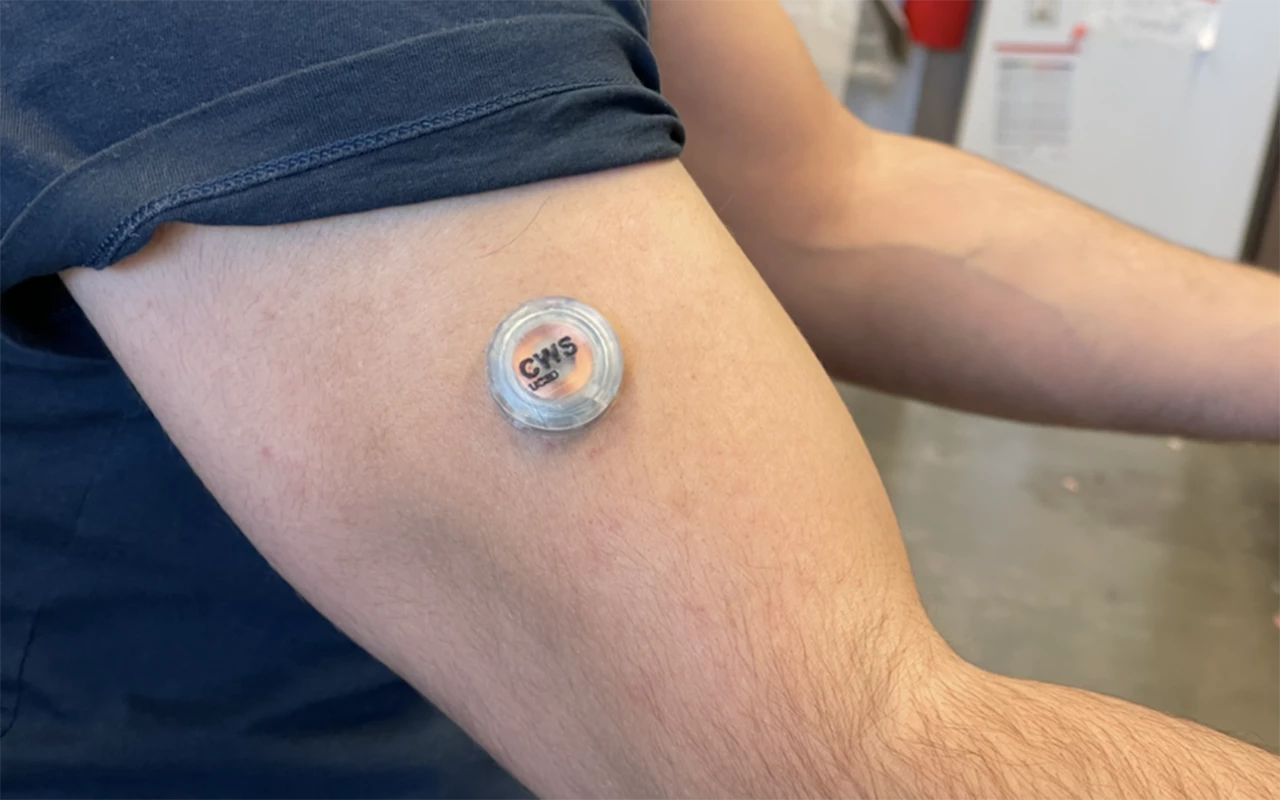While we've already seen skin-worn patches that can detect individual substances in the bloodstream, a new one goes considerably further. It simultaneously measures glucose, alcohol and lactate, and could have multiple applications.
Designed by a team of engineers at the University of California-San Diego – and building on previous research – the prototype thick-coin-shaped device consists of two linked sections.
On the bottom is a disposable array of microneedles, each one measuring about one fifth the width of a human hair. When the entire device is pressed onto the skin, those needles painlessly penetrate the skin's upper layers, coming into contact with the interstitial fluid that surrounds the skin cells. Concentrations of chemicals within that fluid correspond to those in the blood.
On top is a reusable case that includes the electronics – these include the battery, electrical sensors, a microprocessor and a Bluetooth module. That case and the microneedle array almost always remain joined together, except when a used array is pulled off and replaced with a new one.

There are enzymes on the tips of the microneedles, but not all of the needles have the same enzymes – some of them react with glucose in the interstitial fluid, while others react with alcohol and lactate. In all cases, the reaction produces a small electrical current, the strength of which varies with the level of the detected chemical within the interstitial fluid.
Therefore, by analyzing which needles are relaying an electrical current – and at what strength – it's possible to determine how much glucose, alcohol and lactate are currently present in the bloodstream. This information is wirelessly transmitted to an app on a smartphone, where it's displayed on the screen.
The ability to measure glucose would certainly be useful to diabetics, while measuring blood alcohol in real time could provide users with an objective means of knowing if they've had too much to drink. Additionally, diabetics could check both readings, as the consumption of alcohol lowers glucose levels.
Monitoring lactate, meanwhile, could help athletes know how much muscle fatigue they're experiencing. And again, the information could also be useful to diabetics, as physical activity affects the body's ability to regulate glucose.
In a test of the technology, five volunteers wore the device on their upper arm while eating a meal, drinking a glass of wine, and exercising. Its glucose, alcohol and lactate readings were found to closely match those obtained by a commercial blood glucose monitor, breathalyzer, and lab-based blood lactate measurements, respectively.
"We’re starting at a really good place with this technology in terms of clinical validity and relevance," said Prof. Patrick Mercier, co-corresponding author of a paper on the research. "That lowers the barriers to clinical translation."
The device is now being commercialized by UC San Diego spinoff company AquilX.





